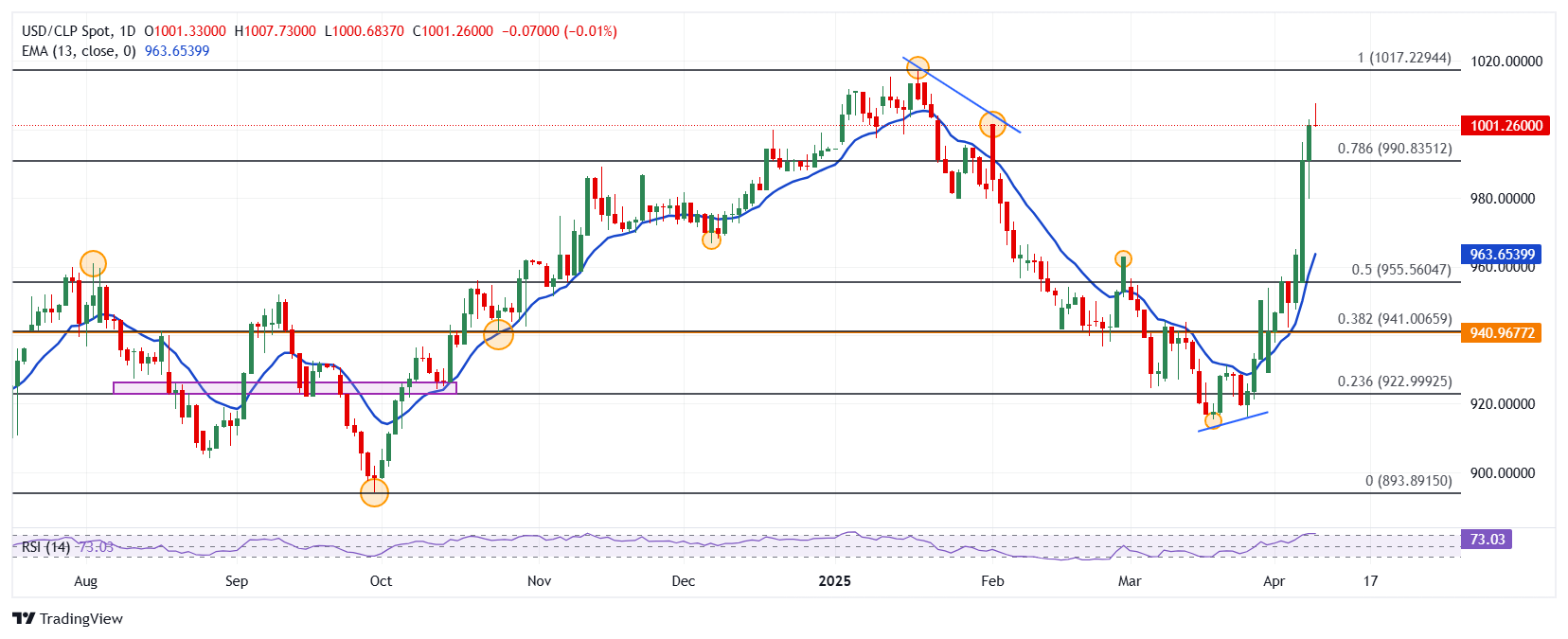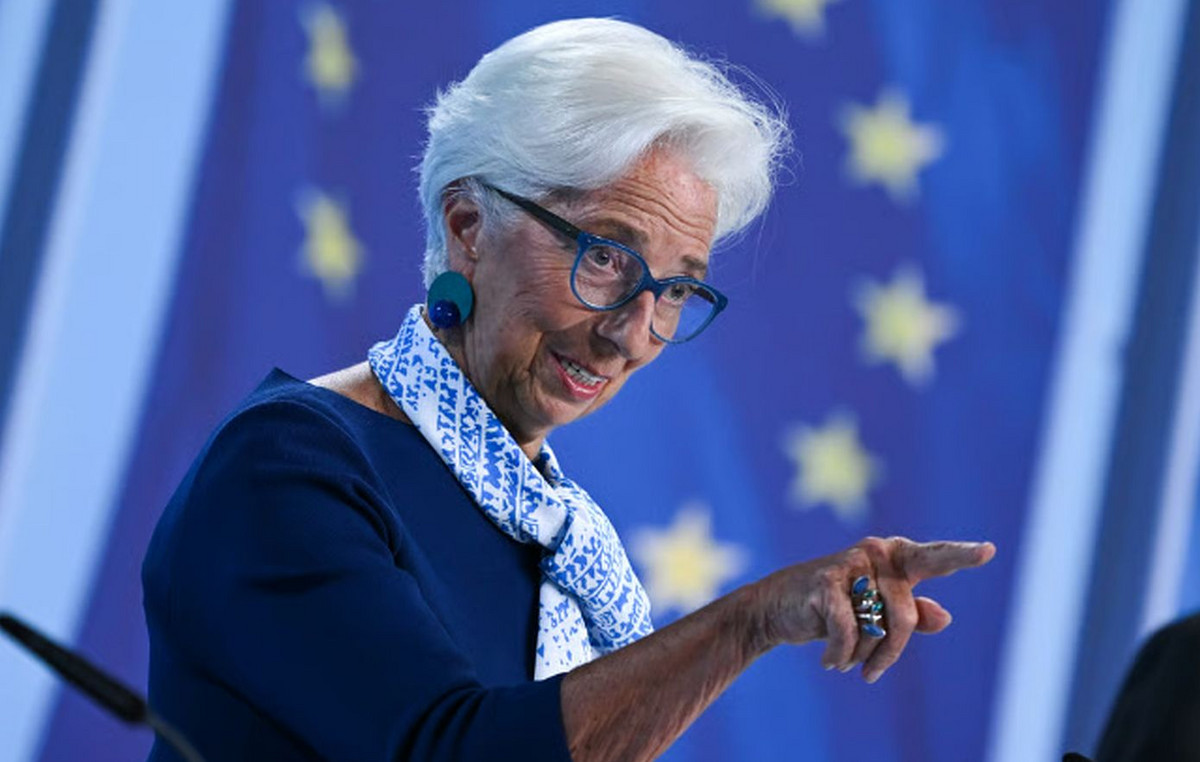- The US dollar operates without significant changes against Chilean peso, quoting when writing at 1,001.64.
- The dollar index (DXY) loses 0.89% today, reaching minimums of April 4.
- China scale commercial tensions by announcing the imposition of additional tariffs of 84% to goods from the United States.
- The attention of investors will be in the publication of the Minutes of the Federal Reserve, at the close of the market.
The USD/CLP established a daily minimum in 1,000.68, finding aggressive buyers that promoted parity to a maximum not seen from January 21 in 1,007.73. At the moment, the USD/CLP operates over 1,001.64, winning 0.02% daily.
The Chilean weight operates down after the increase in commercial tensions between China and the US.
The Ministry of Finance of China has announced that it will impose 84% rates to American goods, effective as of April 10. These measures are given in response to the 104% tariff increase by the administration led by Donald Trump.
In this context, the dollar index (DXY) goes back 0.87% on Wednesday, quoting when writing at 102.80, spinning two consecutive sessions down.
On the other hand, investors will have the focus on the minutes of the Federal Reserve. The monetary authority is expected to provide clarity on the rhythm of type cuts taking into account the increase in tariff tensions.
The Chilean weight has marginal losses today, while the USD/CLP rises 0.02% daily, reaching maximums of January 21 in 1,007.73, spinning fourth consecutive days upward.
Technical levels in the USD/CLP
The USD/CLP reacted upwards from a short -term support given by the minimum of March 19 in 915.57. The following key support in 894.25, minimum of September 30, 2024. To the north, the key resistance is located at 1,017.05, pivot point of January 17.
USD/CLP daily graphics

US dollar FAQS
The US dollar (USD) is the official currency of the United States of America, and the “de facto” currency of a significant number of other countries where it is in circulation along with local tickets. According to data from 2022, it is the most negotiated currency in the world, with more than 88% of all global currency change operations, which is equivalent to an average of 6.6 billion dollars in daily transactions. After World War II, the USD took over the pound sterling as a world reserve currency.
The most important individual factor that influences the value of the US dollar is monetary policy, which is determined by the Federal Reserve (FED). The Fed has two mandates: to achieve price stability (control inflation) and promote full employment. Its main tool to achieve these two objectives is to adjust interest rates. When prices rise too quickly and inflation exceeds the 2% objective set by the Fed, it rises the types, which favors the price of the dollar. When inflation falls below 2% or the unemployment rate is too high, the Fed can lower interest rates, which weighs on the dollar.
In extreme situations, the Federal Reserve can also print more dollars and promulgate quantitative flexibility (QE). The QE is the process by which the Fed substantially increases the flow of credit in a stuck financial system. It is an unconventional policy measure that is used when the credit has been exhausted because banks do not lend each other (for fear of the default of the counterparts). It is the last resort when it is unlikely that a simple decrease in interest rates will achieve the necessary result. It was the weapon chosen by the Fed to combat the contraction of the credit that occurred during the great financial crisis of 2008. It is that the Fed prints more dollars and uses them to buy bonds of the US government, mainly of financial institutions. Which usually leads to a weakening of the US dollar.
The quantitative hardening (QT) is the reverse process for which the Federal Reserve stops buying bonds from financial institutions and does not reinvote the capital of the wallet values that overcome in new purchases. It is usually positive for the US dollar.
Source: Fx Street
I am Joshua Winder, a senior-level journalist and editor at World Stock Market. I specialize in covering news related to the stock market and economic trends. With more than 8 years of experience in this field, I have become an expert in financial reporting.







